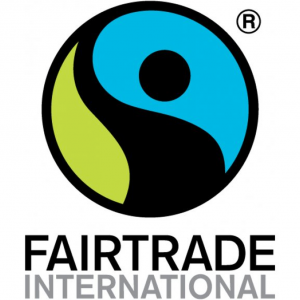Price wars pose a challenge for marketers, whether they are on the retailer’s or manufacturer’s side. Discounts have appeared more often in recent years, likely due to the recession. Consumers are now much more aware of prices than before and are always searching for good value and even better deals.
However, most retailers today claim that their prices are lower than competition, so it is no longer the differentiator it once was. I therefore read with interest when Walmart announced last year that it was moving from its previous emphasis on low prices to one based on sourcing. Could they – and others – have finally worked out that pricing alone won’t keep their customers loyal in the long term?


Both these initiatives show a move to a more caring retail environment. A study run by the Boston Consulting Group at the end of 2013, found that more than half of companies with sales greater than $1 billion are actively planning or considering to bring production back from China to the U.S. This rise from a mere 37% just six months earlier shows a significant shift in American sensitivity.
Jumping across the “pond” to the UK, something similar is happening in terms of shifting attention from price to value, or should I say values?
Tesco has introduced their “Price Promise“, a pledge to match the price of a basket of both own-label and branded products at Sainsbury’s, Asda and Morrisons, or to offer customers a voucher at the till for the difference. Sainsbury’s appealed to the Advertising Standards Authority (ASA), arguing that this claim was misleading customers. However their wrath was, in part at least, sparked by the fact that this new Tesco pledge came in response to their own highly successful “Brand Match” scheme, although the latter only compares branded products.



It looks like pricing has become just the entry stakes for retailers today, and that they now have to find additional ways to keep customers loyal, by demonstrating their values and concern for the society in which they operate. Based upon the most relevant societal trends of the moment, here are a few more suggestions that I came up with, to help them differentiate their image and build or maintain their shoppers’ loyalty:
- Individualism: I live alone, as do a very large minority of people in the developed world (47% in Sweden according to Euromonitor). How about offering smaller packs and individual servings? I would happily pay more for the convenience and the guilt avoidance. (I throw out vast quantities of food that are past their sell-buy date)
- Localism: the horse-meat and other food scandals have made people wary of buying from countries where they are unsure of their controls, hygiene or ethics. Identified sourcing and traceability bring trust and reassurance.
Fairness: This helps eliminate the guilt attached to buying (too) cheap products. We now know that products from the East are in general cheaper than products from the West. However, we still want reassurance that workers are being treated fairly. Fair Trade associations and the end to child-labour are causes most shoppers would be willing to pay (a little) more for.
- Sustainability: Recent weather changes have finally convinced everyone of the need to look after and protect our planet from further degradation. Therefore sustainability has become something to fight for. Whether this is reducing the use of palm oil to protect Indonesian rainforests or finding alternatives to bottled water which both wastes resources and pollutes the land, people are demanding more of manufacturers than low priced products.
- Packaging: Packs are no longer just for protection and shelf-impact, they provide information on ingredients, sourcing and links to apps that provide more about the company who made it or give access to reviews from other buyers.
Services: Some retailers are offering schools for cooking, home repairs, creative pursuits or interior design (see Lowe’s Holoroom as a great example of this). No longer is it sufficient to sell products at low prices; people are getting help with making the best use of them and thus getting more value from their purchases.
These are just a few of the ways that retailers could build their relationships with their shoppers. Consumers may go shopping for low prices, but that is an unsustainable competitive advantage in today’s world. Retailers that maintain the loyalty of their customers will be offering more, whether in terms of support and services, or “feel good” actions around social responsibility, to keep them coming back.
If you would like to update your own retail environment and services, why not contact us for an informal chat? We can provide shopper journey mapping, in-store eye-tracking, at-shelf facial emotional coding and many more forward-thinking tools and ideas.
C3Centricity used images from Dreamstime and named company websites in this post
This post has been updated from one that first appeared on C³Centricity; you can see the original post here.

 Fairness: This helps eliminate the guilt attached to buying (too) cheap products. We now know that products from the East are in general cheaper than products from the West. However, we still want reassurance that workers are being treated fairly. Fair Trade associations and the end to child-labour are causes most shoppers would be willing to pay (a little) more for.
Fairness: This helps eliminate the guilt attached to buying (too) cheap products. We now know that products from the East are in general cheaper than products from the West. However, we still want reassurance that workers are being treated fairly. Fair Trade associations and the end to child-labour are causes most shoppers would be willing to pay (a little) more for.